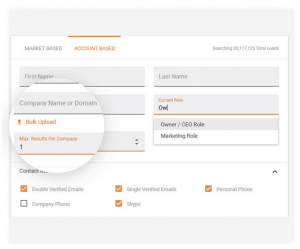Each quarter of the year has its own distinct personality that you have to get to know if you want to be an effective businessperson. The first quarter of the year is the coldest and slowest time of year, the second quarter starts a midyear revival with spring break and warmer weather. The summer season is when everyone is on vacation and enjoying those long nights and the last quarter is of course the holiday season. How do you set appropriate goals for each quarter?
You Could Aim For Growth Compared to the Same Quarter Last Year
In business, you get your best results when you compare similar things. For instance, the most accurate way to get a handle on the health of your business is to compare sales compared to the same quarter last year. It is important to note that you want to compare sales only from locations that were around at this point last year.
This is the most fair way to do so as well because you don’t want to point to sales being down in the first quarter as a bad sign because they are down from the fourth quarter last year. Obviously, this is something that will happen every year, so it doesn’t tell you anything meaningful.
You Could Set a Uniform Quarterly Growth Rate
If you are in an industry that has consistent sales throughout the year, you may want to set a growth target that doesn’t change throughout the year. For example, you could say that sales should grow 3 percent from one quarter to the next. It may also be possible to ask each individual salesperson to increase his or her own sales by three percent or some other objective level during a quarter. This gives your people something to strive for and keeps you working hard through good times and bad.
Growth Rate Could Depend on the Maturity of Your Company
A company that is going from the startup phase to a more mature company could see explosive growth for one or more quarters. Clearly, a company isn’t going to sustain 10, 40 or 100 percent growth rates once it becomes a mature organization. If that is what your business is experiencing, it may be better to focus on customer acquisition rates or how many locations you opened in the past three months compared to a year ago. By looking at market penetration, you can set reasonable goals for future quarters based on how much larger your market share could be or how much more room you have left to grow at such a fast rate.
Creating Goals Means Putting Everything Into Context
There may be quarters when your company experiences negative growth, negative revenues or other negatives that you would rather not experience. However, good weather during the winter is generally bad for the ski industry or other companies and others that depend on the snow, and you can’t control the weather no matter how hard you try. If you think that you may be hit by bad weather or other variables beyond your control, the key is to reevaluate your quarterly goals and do the best that you can until things turn around. Remember, not meeting your goals doesn’t necessarily mean that you have failed. Instead, it provides you with experience to learn from the next time it occurs.
Part of running a company is setting goals that you and your people can achieve. Over time, you will find that it becomes easier to set these goals because you will have a better idea of market, customer and other trends in your industry and in your specific location.
Business & Finance Articles on Business 2 Community(43)
Report Post




